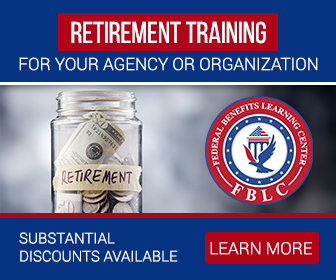Key Takeaways
-
Ignoring dental and vision needs in retirement can lead to significant out-of-pocket costs, making FEDVIP coverage more important than many retirees expect.
-
Enrollment windows and plan options under FEDVIP in 2025 provide critical opportunities to secure affordable, long-term dental and vision care.
The Overlooked Costs of Retiring Without Dental and Vision Coverage
When planning your retirement, it’s natural to focus on healthcare coverage under FEHB or Medicare. However, many retirees underestimate how essential dental and vision care becomes—and how costly it can get without
supplemental coverage like FEDVIP.
Dental expenses can quickly escalate with age, particularly with procedures such as crowns, root canals, implants, and periodontal maintenance. Vision costs also grow as conditions like cataracts, glaucoma, and macular degeneration become more common.
Without insurance, retirees could easily face:
-
$1,000 or more for a single dental crown
-
$2,000–$5,000 for implants
-
Hundreds for eyeglasses and exams annually
-
Thousands for corrective surgeries
In 2025, more retirees are recognizing that dental and vision health is not a luxury—it’s essential to maintaining quality of life.
Understanding FEDVIP: What It Offers in 2025
The Federal Employees Dental and Vision Insurance Program (FEDVIP) remains a crucial support system in retirement. Unlike FEHB, which sometimes offers limited dental or vision benefits, FEDVIP specializes in these two areas.
FEDVIP provides:
-
A variety of dental plans covering preventive services at no extra cost
-
Coverage for restorative dental work, orthodontia, and oral surgery
-
Vision plans that include annual eye exams, glasses, and contact lens allowances
-
Discounts on laser vision correction and specialized treatments
Importantly, retirees can continue FEDVIP into retirement if they were enrolled before leaving federal service, without a break in coverage.
Enrollment Rules You Cannot Afford to Miss
Unlike FEHB, where you can carry coverage into retirement automatically if eligible, FEDVIP requires you to elect continuation at the time of retirement.
Key rules in 2025 include:
-
You must have been enrolled in FEDVIP before retirement or at least during the latest Federal Benefits Open Season.
-
New retirees cannot join FEDVIP outside of Open Season unless a Qualifying Life Event (QLE) occurs.
-
Open Season in 2025 runs from November to December.
-
Once enrolled, coverage continues without needing to re-enroll annually unless you wish to change plans.
Missing these windows could mean waiting a full year to secure coverage, potentially while facing major dental or vision bills.
Why Dental and Vision Health Demand More Attention in Retirement
You are statistically more likely to face dental and vision issues the longer you live. According to health studies, nearly two-thirds of retirees experience some form of significant dental problem after age 65. Similarly, vision conditions become more prevalent, with cataracts affecting over half of Americans by age 75.
The consequences of neglecting care include:
-
Increased risk of serious oral infections leading to systemic health problems
-
Progressive vision loss impacting independence
-
Higher emergency medical costs from untreated issues
These risks make comprehensive dental and vision coverage a necessity, not an option, for a secure retirement.
How FEDVIP Helps You Control Retirement Expenses
Out-of-pocket medical costs can quickly derail a retirement budget. In 2025, healthcare inflation continues to outpace general inflation, affecting both medical and dental care.
FEDVIP acts as a financial buffer:
-
Preventive services like cleanings, check-ups, and eye exams are often covered in full.
-
Complex procedures receive substantial cost-sharing support.
-
Vision plans help offset the annual costs of new prescriptions and frames.
Choosing a FEDVIP plan that aligns with your anticipated needs can save you thousands over your retirement years.
Common Misconceptions About FEDVIP Coverage
Many retirees still operate under outdated assumptions about dental and vision coverage. Let’s clear up a few common myths:
-
Medicare Does Not Cover Routine Dental or Vision
-
In 2025, Medicare Parts A and B do not cover most dental or vision services like cleanings, crowns, glasses, or contact lenses.
-
-
FEHB Plans Offer Minimal Dental/Vision Benefits
-
FEHB plans may provide discounts or limited coverage, but they do not replace the need for comprehensive dental and vision insurance.
-
-
FEDVIP Is Only for Major Procedures
-
FEDVIP emphasizes preventive care to catch issues early and reduce the need for costly procedures later.
-
Understanding the true role of FEDVIP can help you plan more effectively for your long-term care needs.
Smart Strategies for Choosing a FEDVIP Plan in 2025
Choosing the right plan involves more than picking the cheapest premium. Consider these strategies to make an informed decision:
-
Estimate Future Needs: If you expect dental work like crowns or implants, or vision correction, choose a plan with strong major service coverage.
-
Check Provider Networks: Ensure your preferred dentists, specialists, and optometrists participate in the plan’s network.
-
Review Annual Maximums: Some plans cap the total benefits they pay each year. Higher maximums are better for those needing significant care.
-
Evaluate Out-of-Pocket Costs: Look beyond premiums. Assess copayments, deductibles, and coinsurance rates.
-
Consider Geographic Flexibility: If you plan to move or travel often in retirement, a national network may be more suitable than a regional one.
By using these criteria, you can match your FEDVIP plan to your real-world needs.
The Long-Term Value of FEDVIP in Retirement
Investing in FEDVIP is about much more than avoiding large dental bills or expensive new glasses. It supports:
-
Preventive Health: Catching issues early prevents complications and preserves your well-being.
-
Financial Stability: Predictable costs help you maintain a stable retirement budget.
-
Quality of Life: Good oral and vision health promote independence, mobility, and social engagement.
In short, maintaining your dental and vision care is fundamental to preserving the lifestyle you’ve worked hard to achieve.
What Happens If You Miss FEDVIP Enrollment?
Missing the opportunity to enroll in FEDVIP at retirement can have lasting impacts:
-
You must wait until the next Open Season to enroll, typically one year later.
-
No special enrollment periods exist for dental or vision needs outside of QLEs.
-
Any major dental or vision expense during this gap would have to be paid entirely out-of-pocket.
Given the steep costs involved, it’s critical to ensure you either continue your current FEDVIP enrollment into retirement or enroll during your last eligible Open Season.
Why 2025 Is a Critical Year to Pay Attention
Healthcare costs are rising in 2025. Innovations in dental and vision care—such as advanced implants, laser vision correction, and digital dentures—mean better outcomes but often higher price tags.
Meanwhile, the Open Season for benefits election remains tightly scheduled in November and December, providing only a limited window for retirees to:
-
Start FEDVIP coverage
-
Change FEDVIP plans
-
Add dependents (such as new spouses or children)
Careful attention during this time could prevent years of regret.
Protecting Your Health and Retirement Budget
Ultimately, ensuring you have the right dental and vision coverage means protecting both your health and your wallet. Without it, you could find yourself facing difficult choices between urgent healthcare needs and your financial security.
In 2025, protecting your retirement success requires comprehensive planning—and that absolutely includes FEDVIP.
Take the Next Step Toward a Confident Retirement
Preparing for retirement isn’t just about pensions, TSP balances, or FEHB premiums. It’s also about securing the dental and vision coverage you’ll rely on for years to come. To ensure you choose the right FEDVIP plan and avoid costly mistakes, get in touch with a licensed professional listed on this website today.










